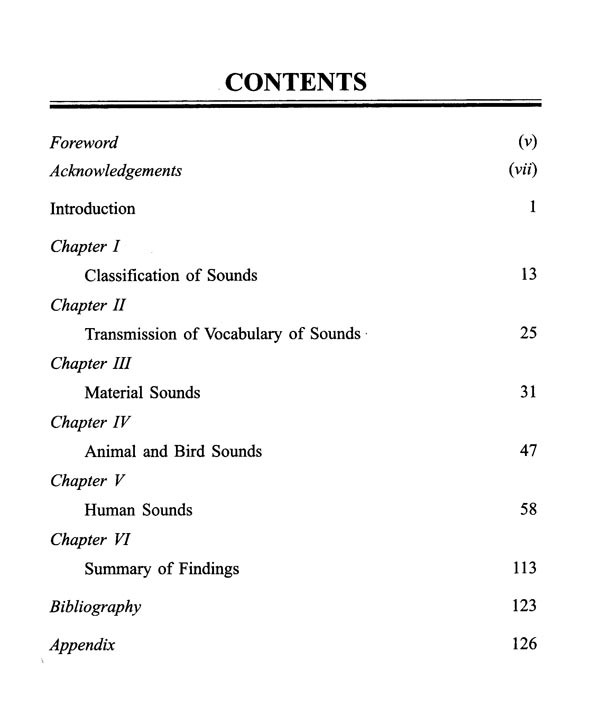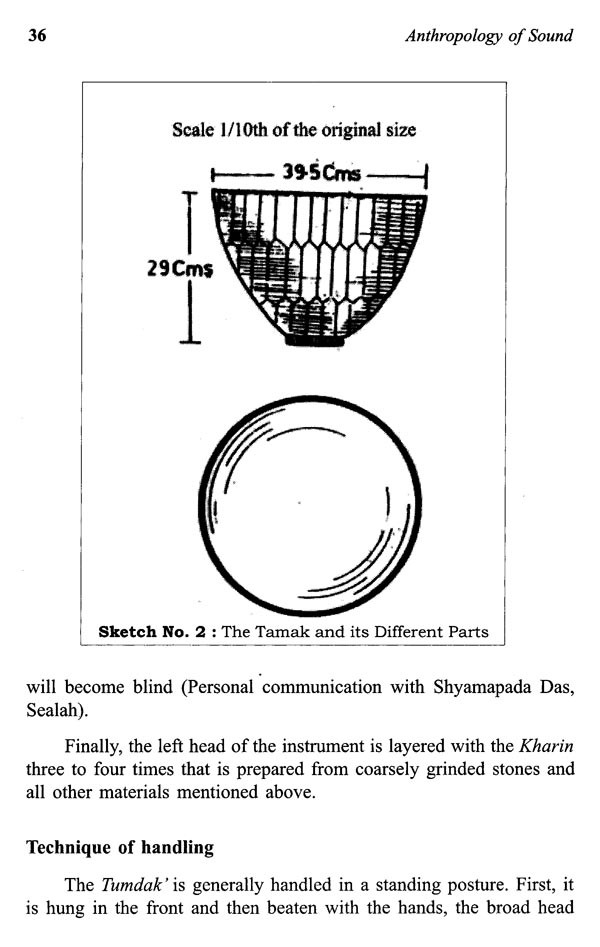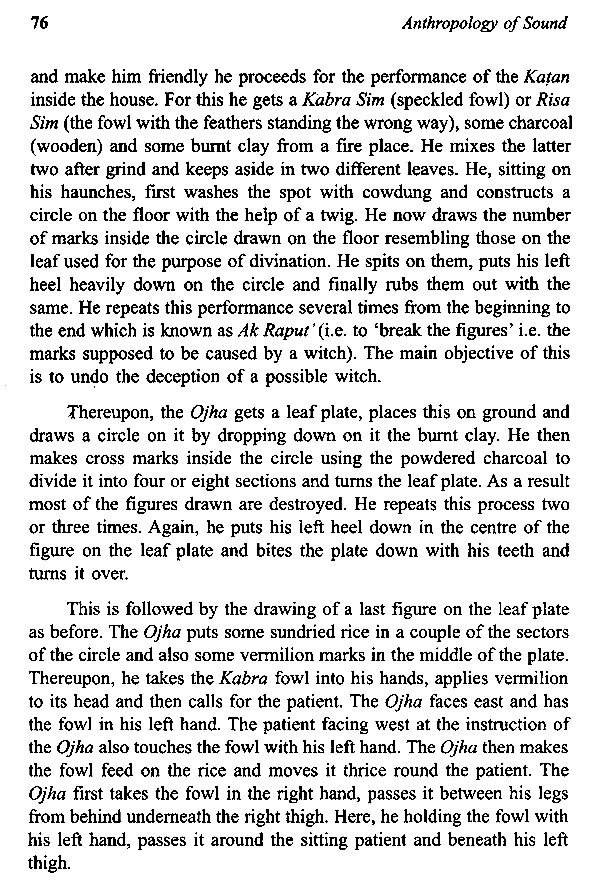
Anthropology of Sound Santal Tribe
Book Specification
| Item Code: | AZE539 |
| Author: | Onkar Prasad |
| Publisher: | B.R. PUBLISHING CORPORATION |
| Language: | ENGLISH |
| Edition: | 2016 |
| ISBN: | 9789350502686 |
| Pages: | 134 (Throughout B/w Illustrations) |
| Cover: | HARDCOVER |
| Other Details | 9.50x6.50 |
| Weight | 330 gm |
Book Description
Sound is an extremely important part of human life. It is not possible for a man to communicate without it. Not only that, sound brings awareness and helps in organizing human life. In fact, the vital functions of life -experiencing, and life expressing are grounded in it. Therefore, its study in social-cultural context of a society as an alternative paradigm is meaningful.
The present study, apart from introducing the subject and arriving at some generalizations in its concluding part has been organized under five chapters each dealing with the Santal classificatory system of sounds, their mode of transmission of vocabulary of sounds, material sounds, animal and bird sounds and human sounds respectively. In all these, an attempt has been made to deal with the function and meaning of various types of sounds constituting the Santal auditory world that help them regulate their life and maintain and perpetuate their society harmoniously.
I find that Prasad has collected quite a good number of indigenous terms on sound. It is quite surpirsing find that the Santal have noted and coined terms for even minute differences in sound phenomena caused by a single object, thereby, reflecting their high level of sensitivity towards the sound phenomena of the environment which the rural and the urban civilized people have been lacking to a great extent. These terms also serve as means not only for reconstructing the way of life of the Santal in the past set up of ecology but also for the changes that are on in their life style due to the impact of urbanization and modernization.
Dr. Prasad, in his work, deals with the Santal perception of sound phenomena and also tries to relate it to the larger context of the knowledge system of human society in general and Indian society in particular. He has also attempted to arrive at some generalizations in respect of the basic principles of sound operating at the ground as well as the cosmic levels. His twofold observations regarding the inherent quality of sound viz metaphysical and physical are worth noting. Such work needs to be done among other communities of India to enrich our knowledge about some unknown areas of sound. Prof. Prasad's work is a good example in this regard.
Perceptions about sound are available to a great extent in philosophical traditions of both the Oriental and the Occidental schools of thought and to a lesser extent in ethnographic studies on some tribes throughout the world. These need to be discussed here, in brief, for the purpose of drawing some inferences and formulation of some propositions which in the present study may direct us to find the order among the facts and to arrive at some generalizations on the basis of the empirical work.
**Contents and Sample Pages**












